St. Patrick’s Day is more than just a celebration of Irish culture—it carries deep spiritual meaning and historical significance. Whether you’re curious about its roots or looking to understand its modern-day relevance, this introduction will give you a clear understanding of St Patrick’s Day spiritual meaning and why it’s celebrated worldwide.
Explore the spiritual meaning of St. Patrick’s Day beyond the celebrations. Discover the legacy of St. Patrick, his teachings, and the profound significance behind symbols like the shamrock. This blog post delves into the deep connection between Irish culture and spirituality, examining how modern practices align with historical traditions and promote community spirit. Honor the teachings of St. Patrick through reflection, unity, and engaging in meaningful spiritual practices on March 17.
Introduction to St Patrick’s Day Spiritual Meaning
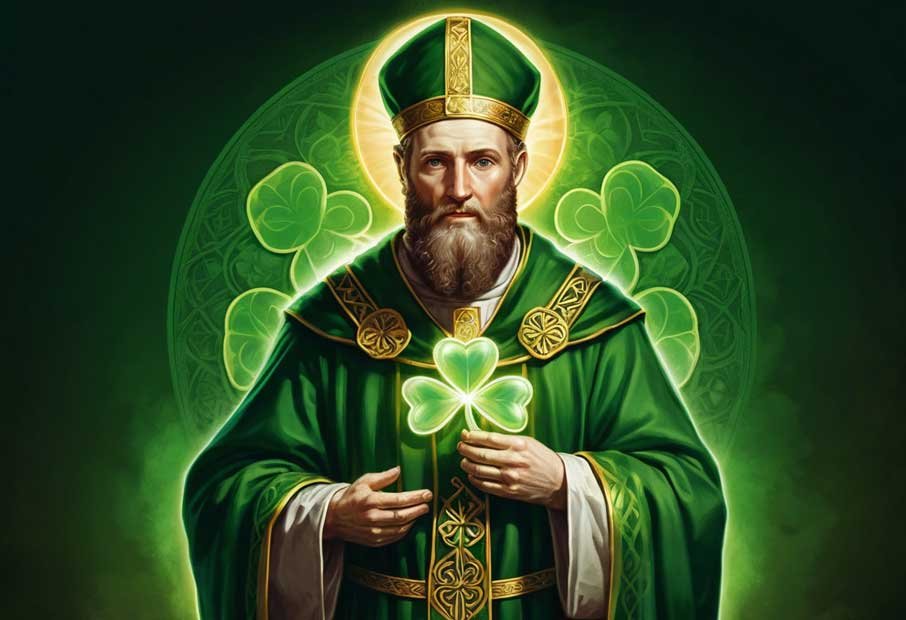
The spiritual meaning of St. Patrick’s Day is deeply intertwined with themes of conversion, symbolism, and cultural heritage. St. Patrick’s teachings and his legendary exploits, such as using the shamrock to explain the Holy Trinity, hold profound meaning within both Christian teachings and the Irish cultural narrative. Thus, the observance of this day serves not only as a tribute to the saint himself but as a reflection of the values and beliefs that shape Irish spirituality.
Furthermore, the essence of St. Patrick’s Day transcends the boundaries of a single religious tradition. While the day is primarily recognized within a Christian context, it also resonates with the broader narratives associated with faith, resilience, and hope. As communities gather to honor St. Patrick, the emphasis shifts towards unity and reverence, bringing individuals together in shared beliefs and cultural pride. This brings forth an understanding of how Ireland’s historical struggles and triumphs are encapsulated in the memory of St. Patrick, enhancing the spiritual dimension of the day.
Through exploring the spiritual meaning of St. Patrick’s Day, we come to appreciate the significance it holds—not just as a day for celebration but as a moment for reflection and connection to deeper spiritual insights that resonate through generations. The traditions and celebrations observed on this day invite individuals to engage with their spirituality and acknowledge the enduring legacy that St. Patrick represents.
What is St. Patrick’s Day?
St. Patrick’s Day is a cultural and religious holiday celebrated every year on March 17th. It honors St. Patrick, the patron saint of Ireland, who played a key role in spreading Christianity across the country. Over the centuries, the holiday has evolved into a celebration of Irish heritage, filled with parades, traditional music, and the iconic color green.
Why is St. Patrick’s Day Celebrated?
The day commemorates St. Patrick’s life and spiritual mission in Ireland. He is credited with converting many Irish people to Christianity and using symbols like the shamrock to teach the concept of the Holy Trinity. Today, St. Patrick’s Day is celebrated globally, not only as a religious occasion but also as a time to honor Irish culture, food, and traditions.
When is St. Patrick’s Day in 2025?
In 2025, St. Patrick’s Day falls on Monday, March 17th. Whether you’re planning to attend a parade, enjoy traditional Irish dishes, or reflect on the St Patrick’s Day spiritual meaning, mark your calendar to join in the festivities.
St. Patrick’s Day, celebrated annually on March 17, is often associated with lively parades, vibrant green attire, and various festivities promoting a spirit of joy and merriment. However, beneath the surface of these commercial celebrations lies a rich spiritual significance that extends far beyond mere revelry. The day commemorates St. Patrick, the patron saint of Ireland, who is credited with bringing Christianity to the island and establishing its enduring faith.
Who Was St. Patrick?
To fully understand St Patrick’s Day spiritual meaning, it’s important to learn about the man behind the celebration. St. Patrick was not only a historical figure but also a spiritual leader whose legacy continues to inspire millions worldwide.
The Life of St. Patrick
St. Patrick was born in Roman Britain around the late 4th century. As a teenager, he was kidnapped by Irish raiders and enslaved in Ireland for several years. During this time, his faith deepened, and he found solace in prayer. After escaping back to Britain, he became a Christian missionary and eventually returned to Ireland to spread Christianity.
St. Patrick’s life is a story of resilience, faith, and devotion. His tireless work to convert the Irish people laid the foundation for what would become Ireland’s Christian heritage.
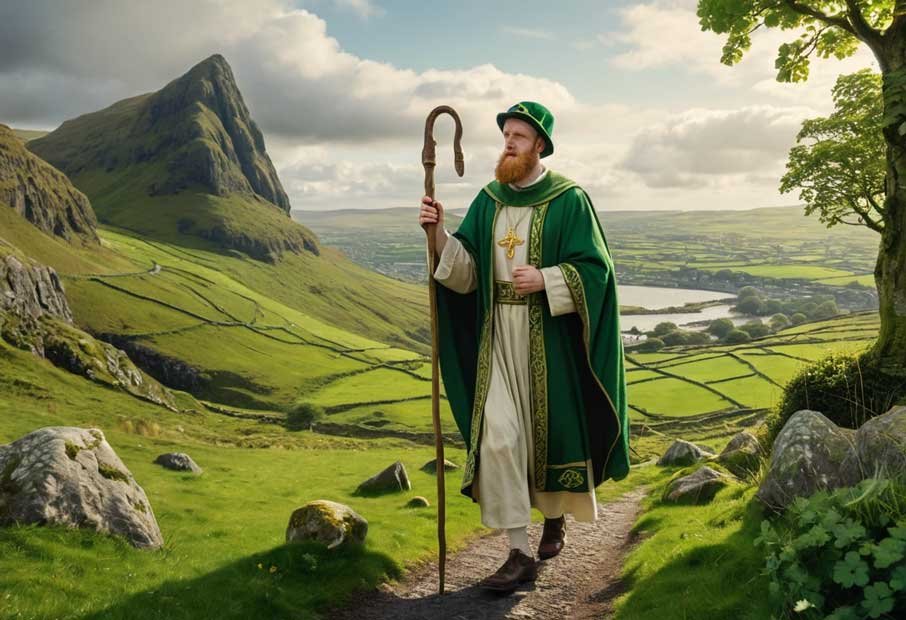
Legends Associated with St. Patrick
St. Patrick’s life is surrounded by captivating legends that add depth to St. Patrick’s Day spiritual meaning. These stories reflect his faith and the impact he had on Ireland’s culture and religious history.
The Legend of Driving Out Snakes
One of the most famous legends about St. Patrick is that he drove all the snakes out of Ireland. While Ireland never had native snakes, the story symbolizes his mission to rid the land of pagan practices and introduce Christianity. The snakes are often interpreted as a metaphor for evil or sin that St. Patrick overcame through his teachings.
The Conversion of Ireland to Christianity
Another significant legend attributes the widespread conversion of Ireland to St. Patrick. He is said to have used the shamrock, a three-leafed plant, to explain the Christian concept of the Holy Trinity—Father, Son, and Holy Spirit. This simple but powerful teaching method helped many Irish people embrace Christianity.
St. Patrick’s life and the legends associated with him form the foundation of St Patrick’s Day spiritual meaning. His story reminds us of the power of faith, perseverance, and the ability to transform an entire nation.
St Patrick’s Day Spiritual Meaning
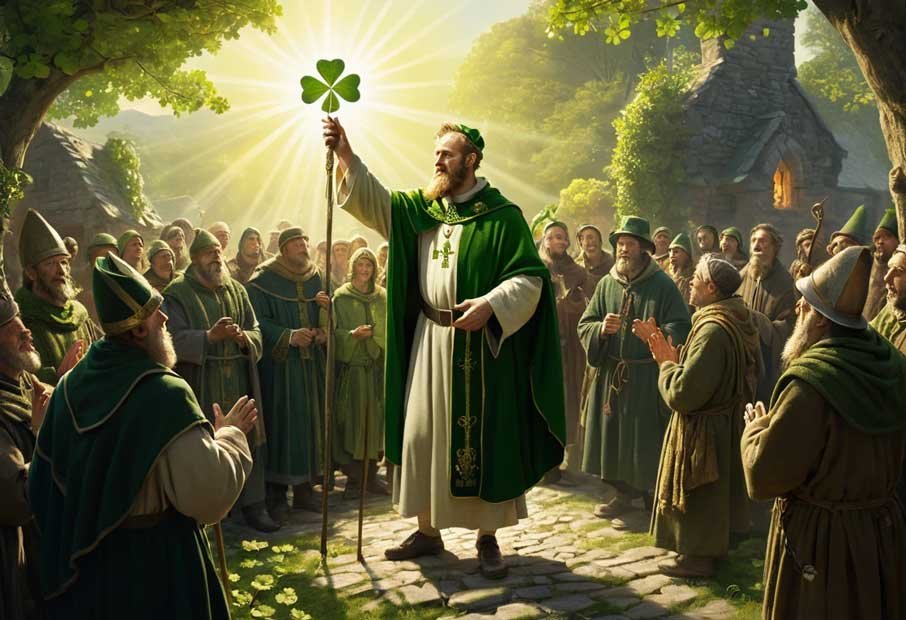
St. Patrick’s Day is celebrated worldwide with parades, green decorations, and cultural festivities. However, beneath the surface of these vibrant celebrations lies a deep and profound spiritual meaning. This day is not just a tribute to Irish culture but a reflection of faith, devotion, and transformation, inspired by the life and teachings of St. Patrick. Let’s explore how St Patrick’s Day spiritual meaning is rooted in history, faith, and the modern world.
St. Patrick’s Day and Faith
At its core, St Patrick’s Day spiritual meaning revolves around faith. St. Patrick dedicated his life to spreading Christianity in Ireland, a mission that was both challenging and transformative. His work emphasized the power of belief and the importance of spiritual growth, making this day a reminder of the role faith plays in overcoming life’s obstacles.
St. Patrick’s use of the shamrock to explain the Holy Trinity (Father, Son, and Holy Spirit) symbolizes how simple, relatable examples can make profound religious concepts accessible. For believers, the shamrock is more than a plant—it is a spiritual emblem that reminds us of the interconnectedness of divine truths.
Today, many see St. Patrick’s Day as an opportunity to reflect on their own faith, attend church services, and embrace spiritual renewal. It’s a time to recognize that, like St. Patrick, faith can provide strength, guidance, and purpose, even in the most difficult circumstances.
Lessons from the Life of St. Patrick
St. Patrick’s life offers countless lessons that resonate deeply with the spiritual meaning of the holiday. Born in Britain and kidnapped by Irish raiders as a teenager, Patrick endured slavery for several years. Rather than succumbing to despair, he turned to prayer and found solace in his faith. This transformative experience not only strengthened his spirituality but also prepared him for his future mission.
One of the greatest lessons from St. Patrick’s life is the importance of forgiveness and purpose. After escaping slavery, he could have chosen to leave Ireland behind forever. Instead, he returned to the very place where he had been enslaved to share the message of Christianity. His willingness to forgive and dedicate his life to serving others is a powerful example of spiritual resilience.
St. Patrick also teaches us the value of persistence. Converting Ireland to Christianity was no small task, especially in a land with deeply rooted pagan traditions. Yet, he persevered, using creative methods, such as the shamrock, to connect with people and inspire change.
For modern readers, the story of St. Patrick serves as a reminder that faith, determination, and a sense of purpose can help us overcome life’s greatest challenges.
Modern Spiritual Significance
In today’s fast-paced, materialistic world, the spiritual meaning of St. Patrick’s Day offers a chance to pause, reflect, and reconnect with what truly matters. While the parades and festivities bring joy and community spirit, they also carry an underlying message of hope, unity, and transformation.
For many, the holiday represents the victory of light over darkness. St. Patrick’s success in spreading Christianity symbolizes the triumph of faith and goodness over fear and ignorance. His teachings remind us that spiritual growth is an ongoing journey, not a destination.
The modern spiritual significance of St. Patrick’s Day extends beyond religious boundaries. It encourages people of all faiths and backgrounds to focus on shared values such as compassion, forgiveness, and perseverance. The day serves as a reminder that small, meaningful actions—whether helping a neighbor, showing kindness to a stranger, or practicing gratitude—can create lasting change in the world.
For those who are not religious, St. Patrick’s Day can still inspire reflection on personal growth and the importance of community. The spirit of the day lies in its ability to bring people together, transcending differences and celebrating the universal human experience.
Symbols of St. Patrick’s Day and Their Meanings
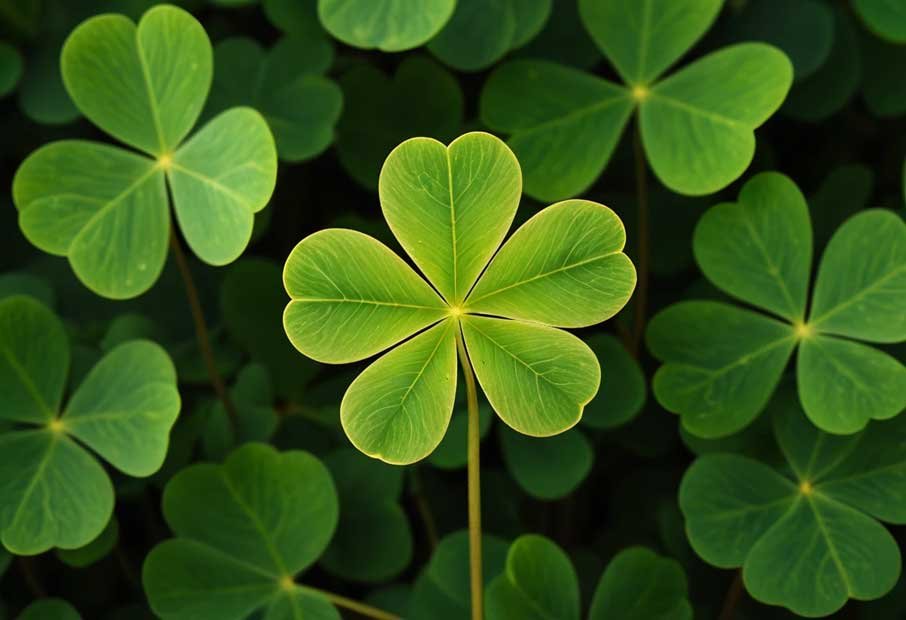
The symbols associated with St. Patrick’s Day spiritual meaning are more than festive decorations—they are rich in history, faith, and Irish heritage. Each symbol tells a unique story, reflecting the values and traditions that make this holiday so significant. Let’s dive into the deep meanings behind these iconic symbols.
The Shamrock: Symbol of the Trinity
One of the most famous symbols of St. Patrick’s Day is the shamrock. St. Patrick is said to have used this three-leafed plant to explain the Christian concept of the Holy Trinity: the Father, the Son, and the Holy Spirit. The shamrock became a powerful teaching tool, making complex theological ideas more accessible to the Irish people.
Beyond its Christian significance, the shamrock also represents renewal, growth, and the connection between humanity and nature. Its vibrant green color is a reminder of Ireland’s lush landscapes and the spiritual idea of flourishing through faith.
The Celtic Cross: A Blend of Faith and Culture
The Celtic Cross is another symbol deeply tied to St. Patrick’s Day spiritual meaning. This cross, which combines the Christian cross with a circular design, represents the blending of Christian and Celtic traditions.
Legend has it that St. Patrick introduced the circle to the cross to help the Irish better understand Christianity, using it to signify eternity and the unity of the divine. Today, the Celtic Cross stands as a timeless emblem of Ireland’s spiritual and cultural heritage.
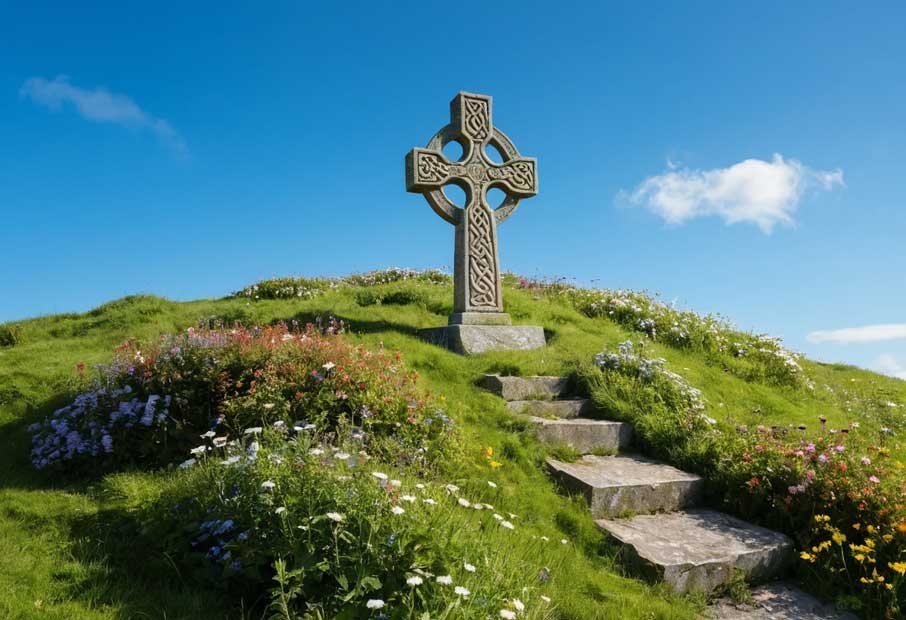
The Color Green: A Representation of Ireland and Renewal
Green is the signature color of St. Patrick’s Day, but its significance goes far beyond festive attire. Green represents the lush landscapes of Ireland, famously known as the “Emerald Isle.” It also symbolizes renewal, hope, and spiritual growth, aligning perfectly with the holiday’s deeper meaning.
In Christian tradition, green is associated with new beginnings and the promise of eternal life. Wearing green on St. Patrick’s Day is not just about showing Irish pride—it’s also a way to embrace the spirit of renewal and transformation.
Leprechauns: Guardians of Irish Folklore
Leprechauns are playful symbols of Irish folklore, often depicted as mischievous little men guarding pots of gold. While they might seem whimsical, their presence in St. Patrick’s Day celebrations highlights the rich storytelling tradition of Ireland.
In a spiritual context, leprechauns remind us of the unseen mysteries in life and the rewards that come from patience and perseverance. Their connection to hidden treasure reflects the idea that true riches—whether material or spiritual—often require effort and faith to uncover.
The Harp: Ireland’s National Emblem
The harp is a timeless symbol of Ireland’s artistic and cultural heritage. Its connection to St. Patrick’s Day lies in its representation of harmony, unity, and spirituality. For centuries, the harp has been used in Ireland to convey emotions and tell stories, making it a symbol of the nation’s soul.
In the context of St. Patrick’s Day spiritual meaning, the harp reminds us of the harmony between faith, culture, and community. It’s a call to celebrate not just Ireland’s traditions but also the universal human experience of connection through art and faith.
The Pot of Gold: A Promise of Prosperity
The pot of gold, often depicted at the end of a rainbow, is a symbol of hope, abundance, and the pursuit of dreams. While rooted in Irish folklore, it also carries spiritual significance. It reminds us that life’s greatest treasures—love, faith, and purpose—are often found when we persist through challenges.
This symbol ties into the St. Patrick’s Day spiritual meaning by encouraging people to seek not just material wealth but also the spiritual riches that lead to fulfillment and joy.
Snakes: A Symbol of Transformation
One of the most enduring legends of St. Patrick is that he drove all the snakes out of Ireland. While Ireland never had native snakes, the story is often interpreted as a metaphor for St. Patrick’s role in eliminating pagan practices and introducing Christianity.
Snakes, in many spiritual traditions, symbolize transformation and renewal. Their shedding of skin represents rebirth, aligning with the themes of spiritual awakening and growth that define St. Patrick’s legacy.
St. Patrick’s Flag: A Symbol of Unity
St. Patrick’s Flag, a red saltire on a white background, represents unity and peace. Although not widely used in modern celebrations, the flag reflects St. Patrick’s mission to bring harmony and faith to Ireland. It serves as a reminder that spiritual growth often begins with unity—within oneself and with others.
In the broader context of St. Patrick’s Day spiritual meaning, the flag symbolizes the universal message of compassion and connection that St. Patrick’s teachings embody.
History of St. Patrick’s Day
St. Patrick’s Day is not just a celebration of Irish culture; it is a day deeply rooted in history, tradition, and spirituality. Understanding its origins and how it has evolved over the centuries gives us a deeper appreciation of the St. Patrick’s Day spiritual meaning and its enduring significance worldwide.
Origins and Early Celebrations
The history of St. Patrick’s Day begins with St. Patrick himself, the patron saint of Ireland. Born in Roman Britain around 385 AD, St. Patrick was kidnapped and enslaved in Ireland at the age of 16. During his captivity, his faith deepened, and he is said to have received a divine vision that eventually guided him back to Ireland as a missionary. He devoted his life to converting the Irish people to Christianity, using symbols like the shamrock to teach complex theological concepts.
The first recorded celebration of St. Patrick’s Day was in the 17th century when the Catholic Church canonized March 17th as a feast day to honor St. Patrick’s death. These early observances were primarily religious, focusing on prayer, attending church services, and reflecting on St. Patrick’s legacy of faith and perseverance.
Evolution Over the Centuries
As the centuries passed, St. Patrick’s Day evolved from a solemn religious observance to a broader cultural celebration. This transformation began in the 18th century when Irish immigrants, particularly in the United States, began to use the day as a way to celebrate their heritage. The first St. Patrick’s Day parade took place in Boston in 1737, followed by the famous New York City parade in 1762. These parades emphasized Irish pride and unity, showcasing the resilience and cultural richness of the Irish diaspora.
During this period, traditional religious elements were complemented by new symbols like the color green, shamrocks, and leprechauns. The holiday also became a time for music, dance, and festive meals, reflecting Ireland’s lively cultural traditions.
St. Patrick’s Day in Modern Times
Today, St. Patrick’s Day has become a global phenomenon, celebrated not only in Ireland but also in countries with large Irish communities, including the United States, Canada, Australia, and beyond. Modern celebrations blend religious traditions with secular festivities, creating a unique mix of faith, culture, and entertainment.
In Ireland, St. Patrick’s Day is still recognized as a holy day, with many attending church services to honor St. Patrick’s legacy. However, it is also a national holiday, marked by parades, music, and cultural events that attract visitors from around the world. Major cities like Dublin host elaborate festivals that showcase the best of Irish art, history, and cuisine.
In other parts of the world, the holiday has taken on different flavors. For example:
- Chicago dyes its river green every year, creating a stunning visual spectacle.
- New York City hosts one of the largest St. Patrick’s Day parades, drawing millions of attendees.
- Sydney and Tokyo light up iconic landmarks in green to show their participation in the global celebration.
The spiritual essence of St. Patrick’s Day remains strong, reminding people of the power of faith, resilience, and cultural unity. While many celebrate with food, drinks, and parades, the holiday still invites reflection on St. Patrick’s Day spiritual meaning—a reminder to embrace renewal and gratitude.
Why the History of St. Patrick’s Day Matters
Understanding the history of St. Patrick’s Day is essential to fully appreciating its spiritual and cultural significance. This holiday is not just about wearing green or attending parades—it is a testament to the enduring power of faith and the resilience of a people who have carried their traditions across centuries and continents.
By honoring its origins and evolution, we can celebrate St. Patrick’s Day in a way that respects its deep spiritual roots while embracing its modern expressions. This blend of past and present is what makes the holiday so unique and universally cherished.
How to Celebrate St. Patrick’s Day
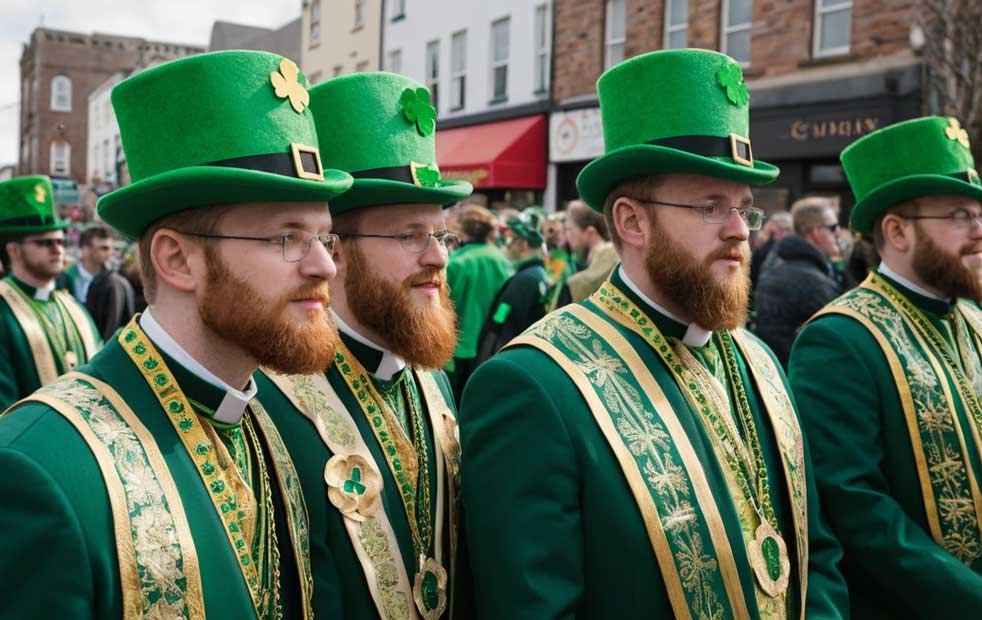
St. Patrick’s Day is one of the most vibrant and joyful holidays celebrated worldwide. With its rich spiritual meaning, cultural significance, and festive atmosphere, the day offers endless opportunities to honor Irish traditions, faith, and heritage. Whether you’re attending parades, enjoying traditional Irish dishes, or decorating your home, there are countless ways to make the celebration meaningful and memorable.
Saint Patrick’s Day Activities
Planning activities for St. Patrick’s Day can make the day fun and engaging while staying true to its cultural and spiritual roots. Below are some of the most popular ways to celebrate:
Parades Around the World
St. Patrick’s Day parades are the heart of the celebration, bringing people together to honor Irish culture through music, dance, and festive floats. From small-town parades to large-scale events, these gatherings embody the community spirit of the holiday.
- New York City hosts one of the largest and oldest St. Patrick’s Day parades, attracting millions of spectators.
- Dublin, Ireland, features a week-long festival with live performances, art exhibits, and a spectacular parade.
- In Chicago, USA, the river is famously dyed green, followed by a lively parade that showcases Irish pride.
Traditional Irish Foods
Food plays a central role in St. Patrick’s Day celebrations. Traditional Irish dishes provide a delicious way to connect with the holiday’s roots:
- Corned Beef and Cabbage: A classic dish served in Irish-American households.
- Irish Soda Bread: A hearty bread made with simple ingredients like flour, baking soda, and buttermilk.
- Shepherd’s Pie: A savory pie made with ground meat, vegetables, and mashed potatoes.
- Irish Stew: A comforting dish made with lamb or beef, potatoes, and carrots.
For dessert, consider Irish cream cheesecake or shamrock-shaped sugar cookies. Don’t forget to enjoy a pint of Irish stout or a glass of Irish whiskey for a true toast to the holiday!
Decorations for the Holiday
Transform your space into an Irish haven with St. Patrick’s Day-themed decorations:
- Shamrocks and Leprechauns: Hang paper shamrocks, leprechaun cutouts, and garlands.
- Green Lighting: Use green LED lights to illuminate your home.
- Table Settings: Decorate with green tablecloths, napkins, and centerpieces featuring Celtic designs.
- Door Wreaths: Create a festive wreath using shamrocks, ribbons, and Irish symbols.
Gifts and Giveaway Ideas
St. Patrick’s Day is a perfect time to share thoughtful gifts that reflect Irish heritage:
- Irish Jewelry: Celtic knots, claddagh rings, or shamrock pendants.
- Books and Music: Gifts featuring Irish poetry, folklore, or traditional Irish music CDs.
- Themed Gift Baskets: Include Irish tea, shortbread cookies, and mini bottles of Irish whiskey.
You can also create small giveaway items like shamrock pins, green hats, or goodie bags filled with chocolate coins and St. Patrick’s Day trinkets.
Painting the Town Green: Global Festivities
Around the world, cities and communities celebrate St. Patrick’s Day in unique and colorful ways. Here are some of the most iconic places to experience the holiday:
Dublin, Ireland
Dublin is the epicenter of St. Patrick’s Day celebrations. The city comes alive with a week-long festival featuring parades, live music, art exhibitions, and historical tours. The streets are lined with people wearing green, and landmarks like Trinity College are illuminated with vibrant lights.
New York City, USA
Home to one of the largest St. Patrick’s Day parades, New York City celebrates with unmatched enthusiasm. Fifth Avenue is transformed into a sea of green as floats, bagpipers, and Irish dancers march through the streets.
Chicago, USA
Chicago’s St. Patrick’s Day celebrations are legendary, with the city’s river dyed green every year. The parade is a spectacle of Irish pride, with colorful floats, traditional Irish music, and plenty of cheer.
London, UK
London embraces St. Patrick’s Day with a spectacular parade and festival in Trafalgar Square. Expect traditional Irish music, dance performances, and food stalls offering authentic Irish dishes.
Montreal, Canada
Montreal hosts one of the oldest St. Patrick’s Day parades in North America. The city celebrates with vibrant floats, bagpipers, and dancers, showcasing the enduring Irish influence in Canada.
Celebrate with Meaning and Joy
St. Patrick’s Day offers a unique blend of spiritual meaning and cultural celebration, making it a day that resonates with people from all walks of life. Whether you’re attending a parade, cooking traditional Irish dishes, or decorating your home in shades of green, the holiday provides countless ways to honor Irish heritage and St. Patrick’s enduring legacy.
By understanding the significance behind the activities and symbols, you can celebrate with a deeper connection to the St. Patrick’s Day spiritual meaning while embracing the joy and unity this special day brings.
FAQs About St. Patrick’s Day
St. Patrick’s Day is a holiday steeped in history, faith, and cultural significance. Over the years, it has grown into a global celebration, leaving many curious about its traditions, origins, and customs. Below, we answer some of the most frequently asked questions about St. Patrick’s Day, diving deeper into its spiritual and cultural meanings.
Is St. Patrick’s Day Celebrated in Scotland?
While St. Patrick’s Day is primarily associated with Ireland, its celebration has spread to many countries, including Scotland. Scotland shares deep cultural and historical ties with Ireland, and Irish immigrants brought their traditions across the waters. In cities like Glasgow and Edinburgh, St. Patrick’s Day is celebrated with lively parades, traditional Irish music sessions, and community events that honor both Irish heritage and the spiritual meaning of St. Patrick’s Day.
The focus in Scotland often leans more toward cultural appreciation than religious observance, but you’ll still find churches hosting St. Patrick-themed services, emphasizing the holiday’s spiritual roots.
Do Christians Celebrate St. Patrick’s Day?
Yes, Christians around the world often celebrate St. Patrick’s Day, as St. Patrick himself is a revered Christian saint. The day marks his role in spreading Christianity throughout Ireland and his contributions to strengthening faith among the Irish people. For many Christians, especially Catholics, the day includes attending church services, prayers, and reflecting on the spiritual lessons of St. Patrick’s life, such as forgiveness, perseverance, and faith in God’s mission.
For others, St. Patrick’s Day is a time to connect with their Irish heritage while honoring the spiritual legacy of the saint. Pope John Paul II, during his visit to Ireland, once highlighted the importance of St. Patrick’s contributions, saying, “He planted the seed of faith that continues to grow even today.”
Was St. Patrick Italian?
Interestingly, St. Patrick was not Irish, nor was he Italian. St. Patrick was born in Roman Britain around the 4th century. Some historical sources suggest his family may have had Roman ancestry, which is why there’s sometimes confusion about his Italian heritage. However, his life’s mission was centered on Ireland, where he worked tirelessly to convert the Irish to Christianity.
It’s worth noting that his multicultural background symbolizes unity and serves as a reminder of how faith and perseverance transcend borders, which is a key element of the spiritual meaning of St. Patrick’s Day.
Does Guatemala Celebrate St. Patrick’s Day?
St. Patrick’s Day celebrations in Guatemala are not widespread, but some communities, particularly those with Irish expatriates or cultural ties, may recognize the day. Local pubs or restaurants might host Irish-themed events, offering green beer, Irish music, and decorations featuring shamrocks and leprechauns.
In places where Christian faith plays a significant role, some people may quietly observe the spiritual aspect of the holiday, reflecting on St. Patrick’s contributions to spreading Christianity. While it’s not a national holiday, the influence of St. Patrick’s Day’s spiritual meaning continues to inspire globally.
What Should You Say on St. Patrick’s Day?
St. Patrick’s Day is full of warm greetings and well-wishes. Some common phrases to share include:
- “Happy St. Patrick’s Day!”
- “May the luck of the Irish be with you!”
- “Erin go Bragh!” (Ireland Forever)
- “May your blessings outnumber the shamrocks that grow.”
For those focused on the spiritual meaning of St. Patrick’s Day, you might say:
- “May St. Patrick’s teachings guide your heart.”
- “Blessings to you on this holy day of faith and celebration.”
Sharing these greetings helps spread joy and reminds everyone of the faith and hope tied to the holiday.
How Can You Stay Connected During St. Patrick’s Day?
Staying connected during St. Patrick’s Day has never been easier, thanks to modern technology. Here are some ways to celebrate with friends and family, even if you’re far apart:
- Virtual Celebrations: Host a video call with loved ones, complete with Irish music and storytelling.
- Social Media: Share photos, quotes, and trivia about St. Patrick’s Day’s spiritual meaning on platforms like Instagram and Facebook.
- Watch Live Streams: Many parades and events are streamed online, allowing you to join the fun from anywhere in the world.
- Send E-Cards: Brighten someone’s day with a St. Patrick’s Day-themed e-card featuring shamrocks and heartfelt blessings.
- Cook Together: Share traditional Irish recipes and cook “together” over a video call.
These activities allow you to honor the holiday while fostering a sense of community and togetherness, which is at the core of St. Patrick’s Day’s spiritual significance.
Celebrate St. Patrick’s Day With Knowledge and Joy
Understanding the nuances of St. Patrick’s Day, from its spiritual roots to its global celebrations, enriches the way we honor this beloved holiday. By exploring these FAQs, you gain deeper insights into its cultural and religious significance, ensuring your celebrations are both meaningful and joyous.
The Modern Meaning of St. Patrick’s Day
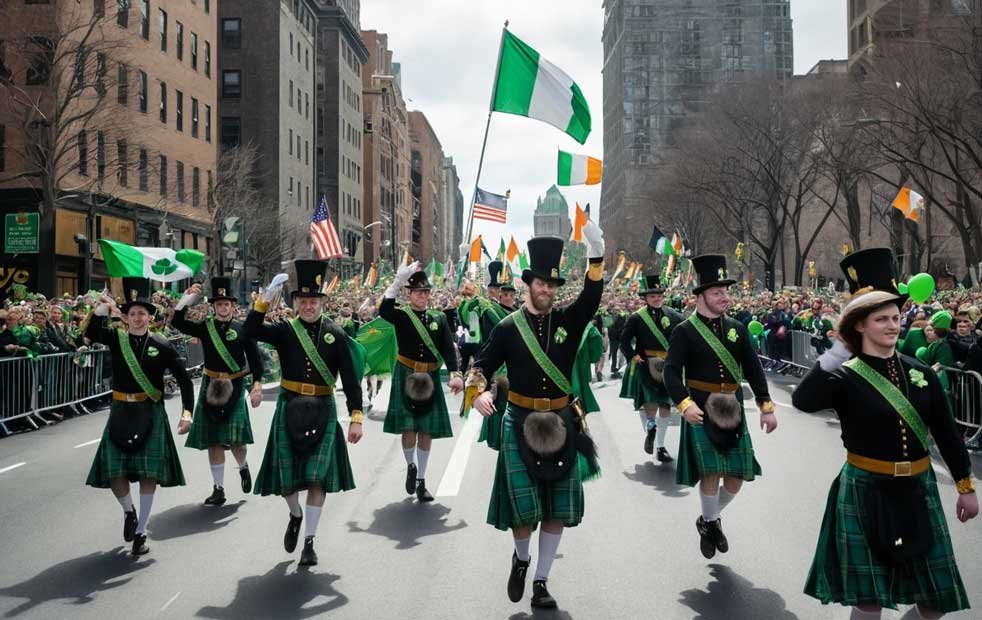
St. Patrick’s Day has evolved from a traditional religious feast day into a global celebration that weaves together culture, history, and spirituality. While its spiritual roots remain central, the modern interpretation of St. Patrick’s Day reflects a broader narrative of unity, pride, and reflection. Below, we delve into how this historic day has been reimagined for today’s world.
A Day of Cultural Pride
St. Patrick’s Day serves as a celebration of Irish heritage and culture, transcending religious boundaries. For the Irish diaspora and those of Irish descent, it is a day to honor their roots and celebrate the rich traditions of Ireland, from its music and dance to its folklore and history. The day has also become an opportunity for non-Irish people to join in the festivities, sharing in the joy and appreciating the influence of Irish culture worldwide.
Why is cultural pride important on St. Patrick’s Day? It reminds us of the resilience and strength of the Irish people, particularly during periods of hardship like the Great Famine and emigration waves. From traditional Irish dishes like corned beef and cabbage to vibrant parades featuring Irish flags, St. Patrick’s Day is a global platform for showcasing Ireland’s enduring legacy.
Spiritual Reflections for the Modern World
Though St. Patrick’s Day is often associated with festivities, its spiritual significance remains just as relevant today. Modern believers reflect on the life of St. Patrick, drawing inspiration from his faith, perseverance, and commitment to spreading Christianity. His journey reminds us of the importance of resilience in the face of adversity and the transformative power of forgiveness.
For many, the holiday becomes a time to pause and reflect on their personal faith and spiritual growth. Churches often host St. Patrick-themed services to honor his memory and remind congregants of the values he lived by—love, humility, and dedication to a higher purpose.
Here are some spiritual lessons from St. Patrick for the modern world:
- Forgiveness: St. Patrick forgave those who enslaved him, showing the strength of his faith.
- Resilience: His return to Ireland to spread Christianity exemplifies perseverance.
- Faith in Action: His mission to convert a nation is a reminder to live out your beliefs.
How St. Patrick’s Day Brings Communities Together
One of the most beautiful aspects of St. Patrick’s Day is how it unites people across cultures and backgrounds. From local parades to global celebrations, the holiday is a testament to the power of community. Families, friends, and even strangers come together to share food, laughter, and festivities, creating memories that last a lifetime.
Parades in major cities, like New York, Chicago, and Dublin, are not just grand displays of Irish culture but also opportunities for communities to bond. In smaller towns, local organizations and schools often host events to bring residents together, fostering a spirit of inclusivity and celebration.
Ways St. Patrick’s Day promotes community spirit:
- Volunteering: Many use the holiday to support local charities and host food drives.
- Cultural Exchange: Events introduce people to Irish traditions, such as dancing and storytelling.
- Inclusivity: Non-Irish communities are welcomed to join in the festivities, promoting understanding and unity.
As we celebrate St. Patrick’s Day, we’re reminded of the universal values of kindness and togetherness, which align closely with the spiritual meaning of St. Patrick’s Day.
Why the Modern Meaning Matters
The modern meaning of St. Patrick’s Day goes beyond green beer and shamrocks. It’s a reminder of faith, cultural pride, and community, encouraging us to celebrate both our differences and shared humanity. Whether you honor the day through spiritual reflection, cultural appreciation, or simply by sharing a laugh with loved ones, St. Patrick’s Day invites us to embrace joy and connection.
About St. Patrick’s Cathedral and Church
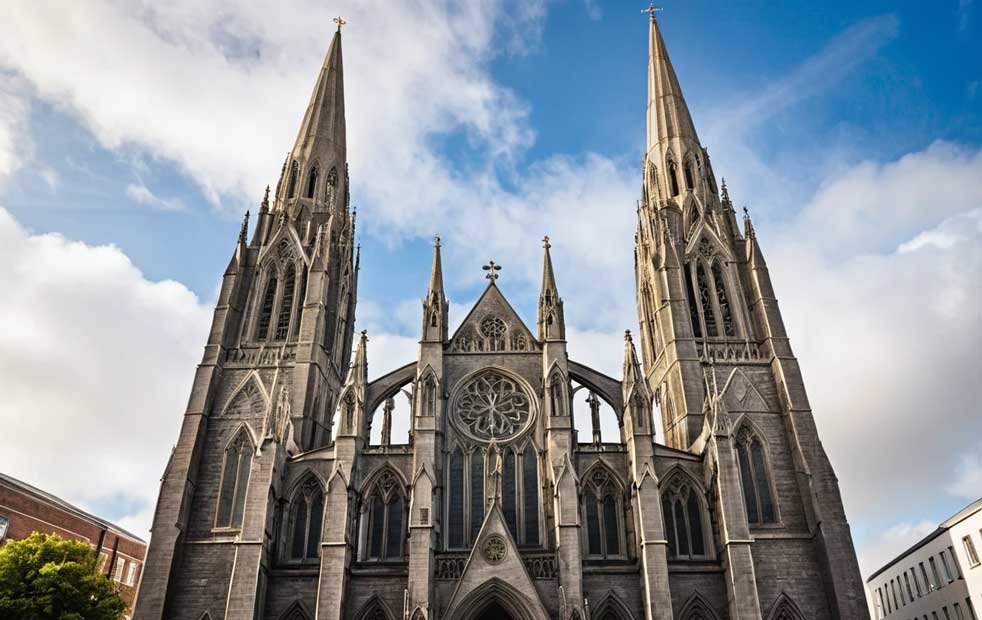
St. Patrick’s Day is not only a time to reflect on the life and legacy of St. Patrick himself but also a moment to pay homage to the spiritual landmarks that bear his name. Among these, St. Patrick’s Cathedral stands as a symbol of Christian faith and Irish heritage. These sacred spaces are more than just places of worship; they are a testament to the influence of St. Patrick’s missionary work in Ireland and across the world. In this section, we explore the significance of St. Patrick’s Cathedral and Churches, how they commemorate the spiritual meaning of St. Patrick’s Day, and the role they play in modern-day celebrations.
St. Patrick’s Cathedral: A Historical Landmark
St. Patrick’s Cathedral in Dublin, Ireland, is undoubtedly one of the most recognized religious landmarks tied to St. Patrick’s legacy. Built in the 12th century, this stunning cathedral has become a focal point for both spiritual reflection and historical exploration. As the largest cathedral in Ireland, it holds a prominent place not only in the hearts of Irish people but also for tourists and pilgrims alike who seek to learn more about St. Patrick’s journey.
This cathedral is historically significant because it is believed to be the site where St. Patrick converted the Irish to Christianity through the use of the shamrock to explain the Holy Trinity. Today, St. Patrick’s Cathedral continues to serve as a place of worship and pilgrimage. Its stunning architecture, beautiful stained glass windows, and rich history offer a serene environment for spiritual reflection.
Some key aspects of St. Patrick’s Cathedral include:
- Gothic architecture: A prime example of medieval design with towering spires and intricate carvings.
- The St. Patrick’s Trail: A route leading visitors through important locations associated with St. Patrick’s life and work.
- Visitors’ Center: Provides interactive displays about St. Patrick’s mission in Ireland.
Notable Features and Events
St. Patrick’s Cathedral is not just a religious site; it is also a cultural hub. Each year, the cathedral hosts a range of events and services that highlight both the spiritual meaning of St. Patrick’s Day and the rich history of Ireland. The cathedral is home to numerous special services, including those held on St. Patrick’s Day, when the faithful gather to celebrate the saint’s life and teachings.
Notable features and events of St. Patrick’s Cathedral include:
- St. Patrick’s Day Services: On March 17th, the cathedral holds a special mass to commemorate St. Patrick’s role in spreading Christianity throughout Ireland.
- Concerts and Performances: The cathedral regularly hosts musical performances, with Irish folk music and choir recitals adding to the festive atmosphere during the St. Patrick’s Day period.
- Educational Exhibitions: These provide visitors with insights into the cathedral’s history, the life of St. Patrick, and Ireland’s rich Christian heritage.
- Virtual Tours: For those unable to visit in person, St. Patrick’s Cathedral offers virtual tours that provide a deep dive into its history and architectural beauty.
St. Patrick Catholic Church Around the World
St. Patrick’s legacy stretches far beyond Ireland, with St. Patrick Catholic Churches in cities across the globe continuing his work of spreading Christianity. These churches are not just places of worship but also symbols of the universal impact of St. Patrick’s faith and teachings. From the United States to Australia, the name “St. Patrick” has been adopted for Catholic churches, and these places provide both local communities and visitors with spiritual solace.
Notable St. Patrick’s Churches around the world include:
- St. Patrick’s Cathedral, New York City, USA: This iconic cathedral stands as a beacon of faith and one of the most recognized landmarks in the world. It is a popular destination for both pilgrims and tourists, especially on St. Patrick’s Day.
- St. Patrick’s Catholic Church, Melbourne, Australia: A historic church that offers Mass services and is known for its beautiful architecture.
- St. Patrick’s Church, Toronto, Canada: Known for its rich history and active participation in local community outreach programs, especially during the holiday season.
- St. Patrick’s Cathedral, Armagh, Northern Ireland: One of the most spiritually significant sites in Ireland, attracting pilgrims and visitors interested in the roots of Irish Christianity.
These churches not only honor St. Patrick’s memory but also provide spiritual refuge for individuals seeking to deepen their faith and understand the spiritual meaning of St. Patrick’s Day.
Why St. Patrick’s Church Matters on St. Patrick’s Day
The St. Patrick’s Day spiritual meaning cannot be fully appreciated without acknowledging the role these churches and cathedrals play in preserving the legacy of St. Patrick. They are a physical and spiritual embodiment of his influence, offering a sacred space for reflection, prayer, and connection to the Christian faith. Whether you visit the St. Patrick’s Cathedral in Dublin or your local St. Patrick’s Church, you are part of a much larger global tradition that honors the saint’s enduring impact.
By visiting these St. Patrick’s Churches and Cathedrals, we are not only participating in St. Patrick’s Day celebrations but also engaging with the deep spiritual roots that connect us all.
Conclusion: The Lasting Spiritual Impact of St. Patrick’s Day
As we reflect on the spiritual meaning of St. Patrick’s Day, it becomes evident that this holiday transcends mere celebration. The roots of this day are steeped in rich history and profound spiritual significance, originating from the life and teachings of St. Patrick himself. The stories and traditions that have developed over centuries serve as a constant reminder of the faith, resilience, and deep connection to the divine that characterizes Irish culture.
Throughout our exploration, we have discovered that St. Patrick’s Day symbolizes not only a cultural heritage but also an opportunity for spiritual reflection. The concepts of renewal, hope, and community come to the forefront during this festive time. Whether through attending religious services, engaging in community events, or simply taking a moment for personal reflection, individuals are encouraged to connect with the deeper aspects of this observance.
Moreover, the various symbols associated with St. Patrick’s Day—such as the shamrock—serve significant spiritual purposes. The shamrock, for instance, has historically represented the Holy Trinity, illustrating how deeply intertwined faith and heritage are in the fabric of this celebration. By appreciating these symbols and their meanings, individuals can deepen their understanding of what St. Patrick’s Day represents on a spiritual level.
In conclusion, the lasting spiritual impact of St. Patrick’s Day encourages us to embrace its significance in our own lives. Whether you choose to observe this day through personal traditions or community gatherings, consider the spiritual dimensions that lie beneath the surface. Engaging with this cherished holiday provides a meaningful pathway to reflect on one’s beliefs, foster community spirit, and honor a legacy that continues to resonate across generations. By doing so, we not only pay homage to St. Patrick but also enrich our own spiritual journeys in the process.
